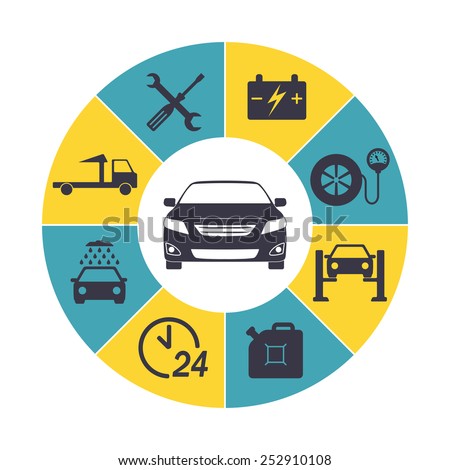Understanding The Actual Implications Of Warning Indicators In Your Vehicle
Understanding The Actual Implications Of Warning Indicators In Your Vehicle
Blog Article
Content By-Johannsen Conradsen
When you're behind the wheel, those radiant caution lights on your control panel can be a bit puzzling. Do you know what they're attempting to tell you concerning your auto's wellness? Understanding the relevance of these lights is crucial for your safety and the durability of your automobile. So, the following time one of those lights appears, wouldn't you wish to decipher its message properly and take the needed actions to address it?
Common Warning Lighting and Interpretations
Recognize common warning lights in your auto and understand their definitions to guarantee secure driving.
One of the most typical warning lights include the check engine light, which indicates issues with the engine or discharges system. If this light begins, it's crucial to have your car examined without delay.
The oil stress alerting light suggests low oil stress, calling for instant focus to prevent engine damage.
A flashing battery light might recommend a damaged billing system, potentially leaving you stranded otherwise dealt with.
The tire stress tracking system (TPMS) light alerts you to low tire pressure, impacting vehicle stability and fuel effectiveness. Neglecting this could bring about risky driving conditions.
The abdominal light suggests a trouble with the anti-lock stopping system, jeopardizing your capacity to stop promptly in emergencies.
Lastly, the coolant temperature level advising light warns of engine overheating, which can lead to extreme damage if not resolved swiftly.
Recognizing these typical caution lights will aid you deal with issues promptly and preserve safe driving conditions.
Significance of Prompt Attention
Understanding the usual caution lights in your cars and truck is just the initial step; the value of quickly addressing these cautions can not be highlighted enough to guarantee your safety on the road.
When a warning light brightens on your dashboard, it's your car's method of communicating a potential problem that requires attention. Ignoring these warnings can result in much more extreme problems in the future, endangering your security and potentially costing you much more out of commission.
Motivate attention to advising lights can protect against break downs and accidents. For https://mylestnhbv.59bloggers.com/28723155/maximizing-the-life-span-of-your-vehicle-with-the-right-car-repair-shop , a flashing check engine light can show a misfire that, if left neglected, can create damages to the catalytic converter. Addressing this without delay can save you from an expensive repair work.
Similarly, a brake system alerting light might signify low brake fluid or worn brake pads, essential components for your security when driving.
DIY Troubleshooting Tips
If you discover a warning light on your control panel, there are a few DIY fixing ideas you can try before seeking professional help.
The first step is to consult your cars and truck's guidebook to understand what the details warning light indicates. Occasionally the issue can be as simple as a loosened gas cap causing the check engine light. Tightening up the gas cap might deal with the issue.
An additional usual concern is a low battery, which can activate various cautioning lights. Checking the battery connections for corrosion and guaranteeing they're safe might take care of the trouble.
If a caution light persists, you can try resetting it by detaching the car's battery for a couple of minutes and then reconnecting it. Furthermore, checking https://connecticut.news12.com/alert-center-suspects-sought-after-15-buses-damaged-in-east-northport , such as oil, coolant, and brake liquid, can assist fix warning lights related to these systems.
Verdict
To conclude, understanding your vehicle's caution lights is important for maintaining your lorry running smoothly and securely. By quickly addressing these alerts and recognizing what they indicate, you can prevent expensive repairs and prospective malfunctions.
Keep in mind to consult your vehicle's handbook for particular information on each advising light and take action accordingly to make sure a trouble-free driving experience.
Keep informed, stay safe on the road!
